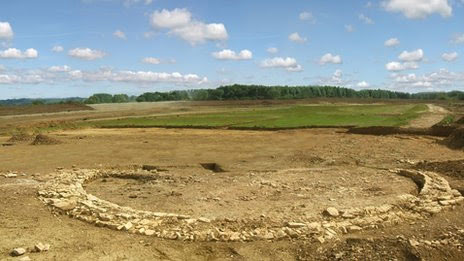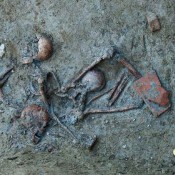Archaeologists have brought to light a Roman shrine at Rutland Water nature reserve, southeast of Oakham. After investigating the site ahead of a 240-acre extension to the reserve by Anglian Water, the team from Northamptonshire Archaeology located the remains of an Iron Age farmstead, and a shrine dating from about 100 AD.
“Finding Roman shrines is not the norm, so we were delighted,” said Jo Everitt, Anglian Water’s environment and heritage assessor. Roman sites had been found before in the area at Collyweston Great Woods, southeast of Rutland, and another to the north-west of Rutland Water, near Oakham.
Nevertheless, nothing had previously been discovered near the lagoons along the western edge of the reservoir.
Building for ritual sacrifice
The team discovered a circular stone building, about 10.5m wide, with decorated red and white painted walls and the skeleton of a man, aged about 30, buried in a grave in the centre of the shrine. Archaeologists believe the shrine fell out of use in 300 AD.
They also found more than 200 Roman coins, pottery jars, part of a small bronze figurine and deposits of animal bone, probably from the ritual sacrifice of lambs and cattle.
Archaeologists have recreated part of the foundation and wall of the shrine from the original stone on an area outside of the lagoons, so visitors to Rutland can see what it looked like.
The findings from the excavations are currently being displayed at the Rutland Water visitor centre.




